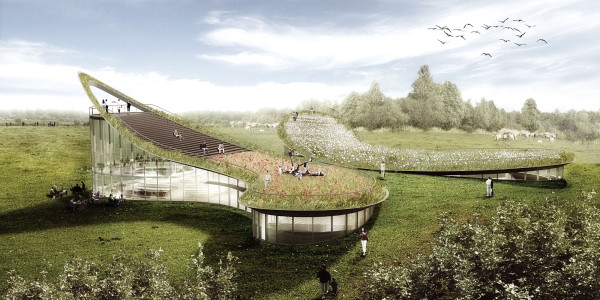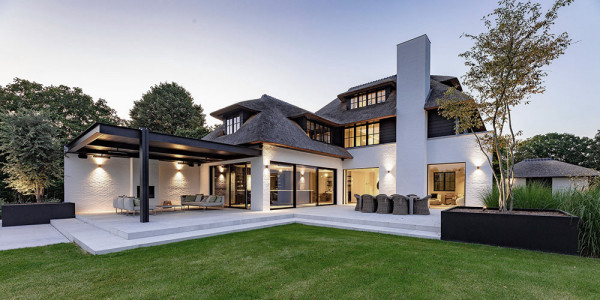We believe in ecological responsive designs that acknowledge the impact of finite resources as a positive contributor in the creation of an ethical architecture. It guides our design choices and recommendations during the entire design process. Our approach to sustainable design creates an architecture that is uplifting to its users and in harmony with its natural surroundings.
Our homes meet the stringent requirements of modern housing. In addition to the numerical approach to these regulations, we believe that sustainability should be integrated in all aspects of the design and tailored to the specific usage needs of the client.
The combination between intelligent use of daylight and sun warmth, technical aspects, thoughtfully designed building elements in relation to light and heat, sustainable materials and the timelessness of our designs ensure optimal sustainability in a broad sense.
TECHNICAL ASPECTS OF SUSTAINABILITY
The performance of a project is tested by means of energy performance calculations. This demonstrates that the project meets the highest requirements on energy and sustainability. Aspects such as insulation values, energy use and yield by heating and cooling systems, ventilation systems and energy generation are optimized. Together with our sustainability expert, we assess the various aspects and tailor them to the client's specific use. The choices made form the basis for the design.
BUILDING ELEMENTS IN THE SERVICE OF SUSTAINABILITY
Our designs are characterized by large areas of glass - for optimal transparency and sightlines between inside and outside - and large overhangs which provide shelter and shade. This combination ensures that in winter the warmth of the low sun can be used to heat the house and in summer the spacious overhangs provide the necessary shade and cooling. Clear solar glazing reinforces this principle. In this way, the energy necessary for heating and cooling is used to the fullest advantage of natural conditions.
The roof is a strong architectural tool in our designs. In addition to its aesthetic value, it also has an important function with regard to sustainability. After all, most of the energy loss goes through the roof. The roof also plays a role in energy yield. Pitched roofs are positioned to receive sunlight on usually concealed PV panels. Flat roofs, in addition to providing space for PV panels, also allow for the creation of a green roof. This roof offers improved heat accumulation to promote the indoor climate but also provides a water buffer for rainwater and a natural look where the building blends into its surroundings.

Principles of sustainable design
SUSTAINABLE MATERIALS AND CONSTRUCTION METHODS
The surroundings in which our homes are located are often rich in nature and the outdoors plays an increasingly strong role in the living experience. We want to make the transition from inside to outside as minimal as possible. In this way the house blends beautifully into its surroundings. To reinforce this, natural materials are used that fit in with this principle. Natural robust materials are interspersed with "clean" elements such as facades, glass and metal. The rough materials can take a beating and pollution is less visible. Together with the easy-to-clean austere materials, an exciting interplay is created with minimal impact on nature.
The choice of building method largely determines the indoor climate. In 'traditional' construction, mainly stone-like materials are used for the construction. Due to the mass of these materials, heat and cold are retained for a long time, the house gets a kind of delay when it comes to temperature change which, combined with good insulation, heating and cooling, provides a fairly stable indoor climate.

Design of a villa according to the traditional construction method.
In addition to this conventional construction method, we also have extensive experience with solid wood construction (CLT construction). This method is based on prefabricated solid wood wall and floor elements that can be assembled on site into a structural shell in a relatively short time. In addition to the speed, the elements have the advantage that they feel warm and regulate heat, cold and humidity in a different way - usually experienced as comfortable - than stone-like materials. This improves the indoor climate and thus the comfort in the home.

Design of a villa according to the CLT construction method.
TIMELESSNESS AS A PRINCIPLE OF SUSTAINABILITY
At least as important as the previous aspects, we believe that our buildings should stand the test of time. Our designs are contemporary without being fashionable, modern without being boring. 'Modern Classics'.